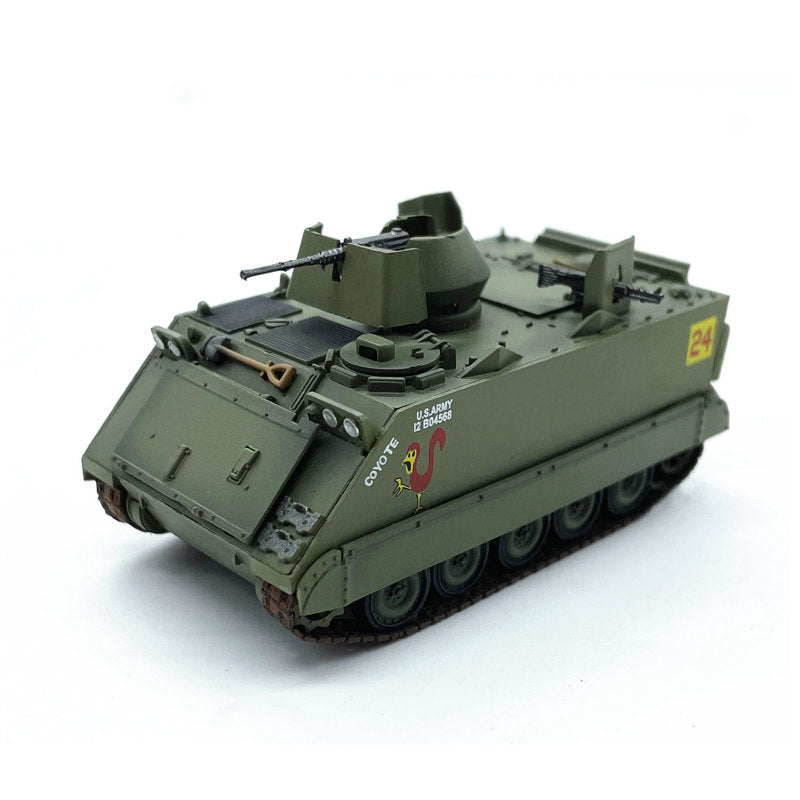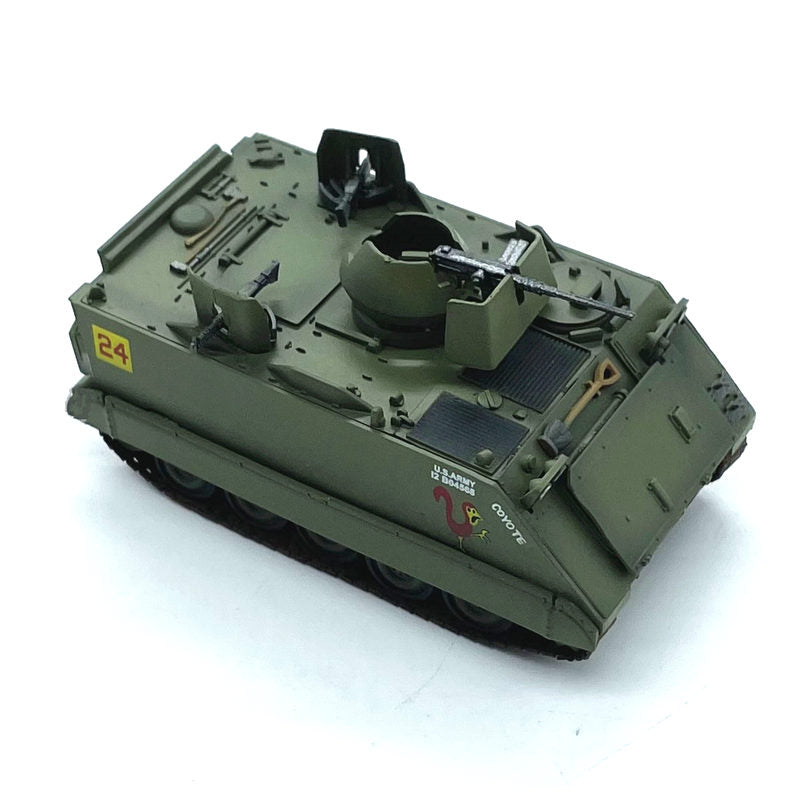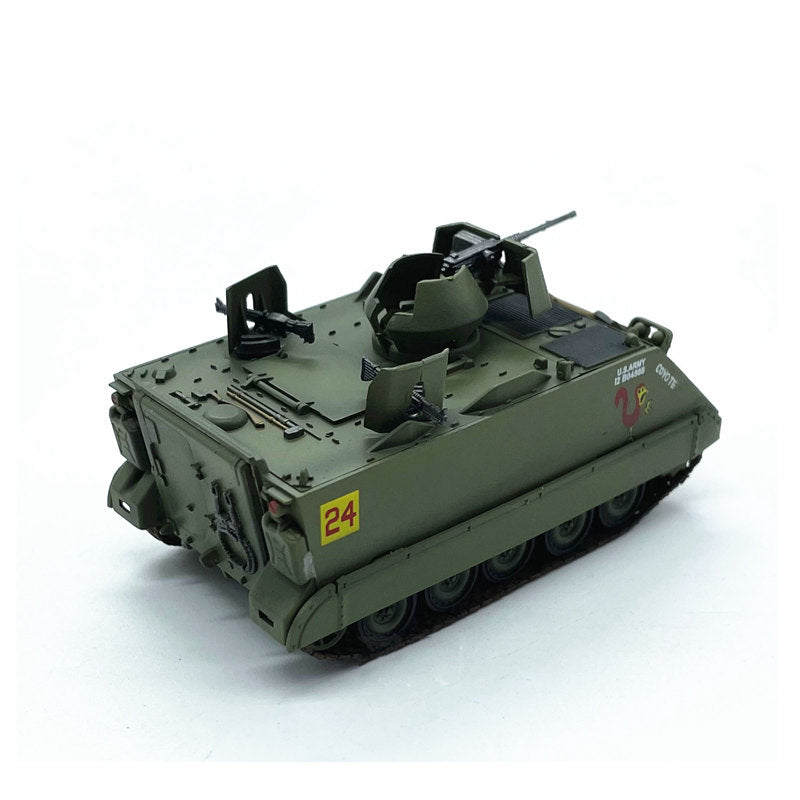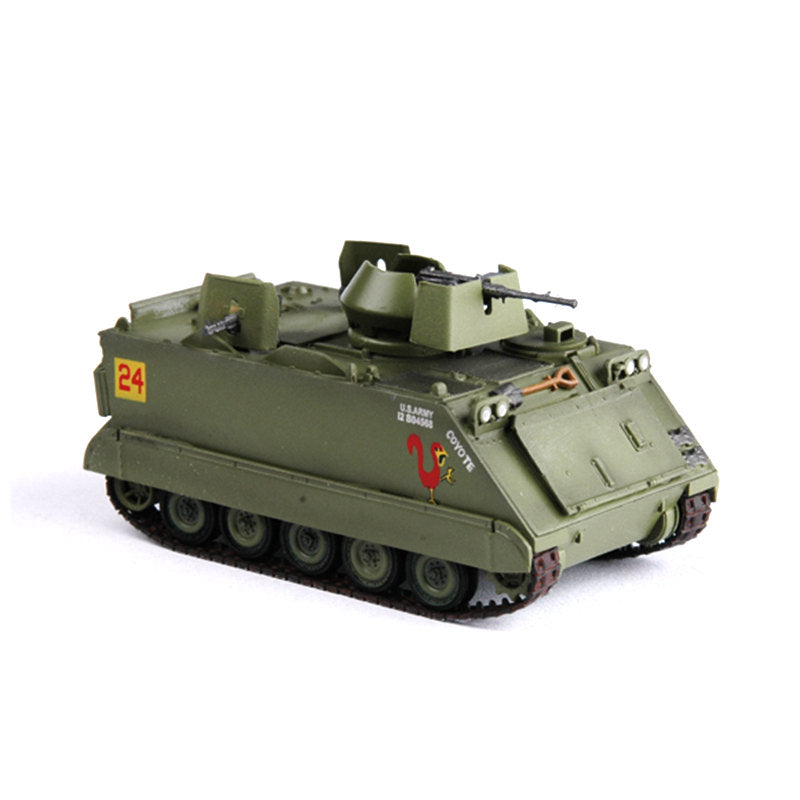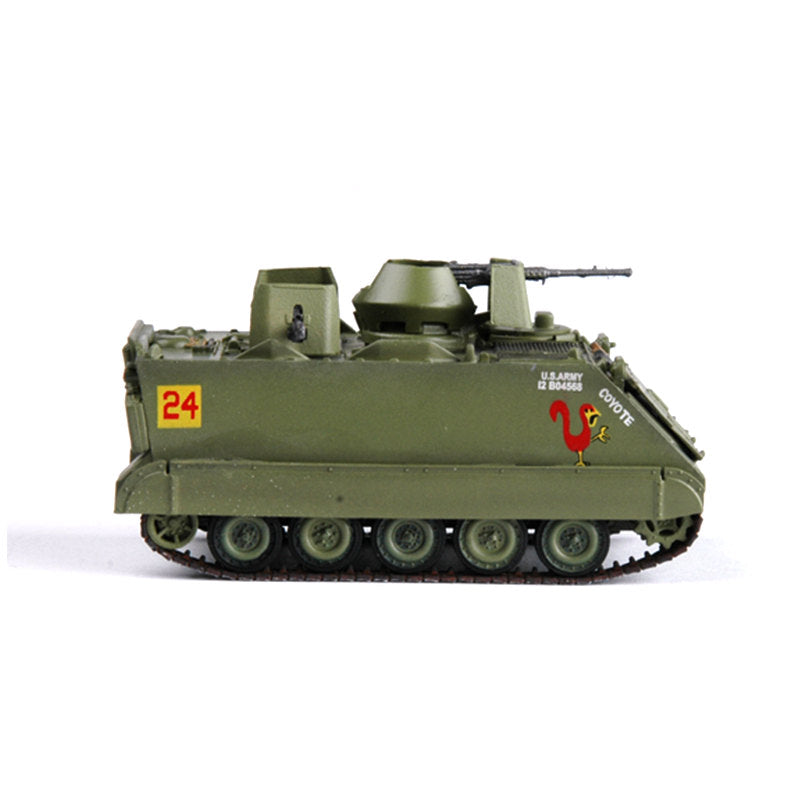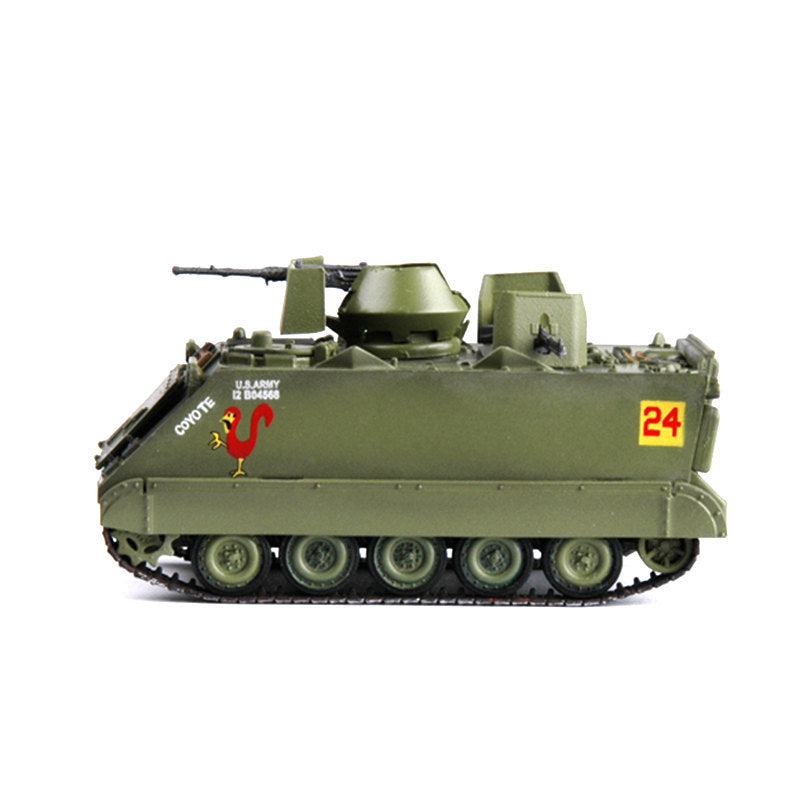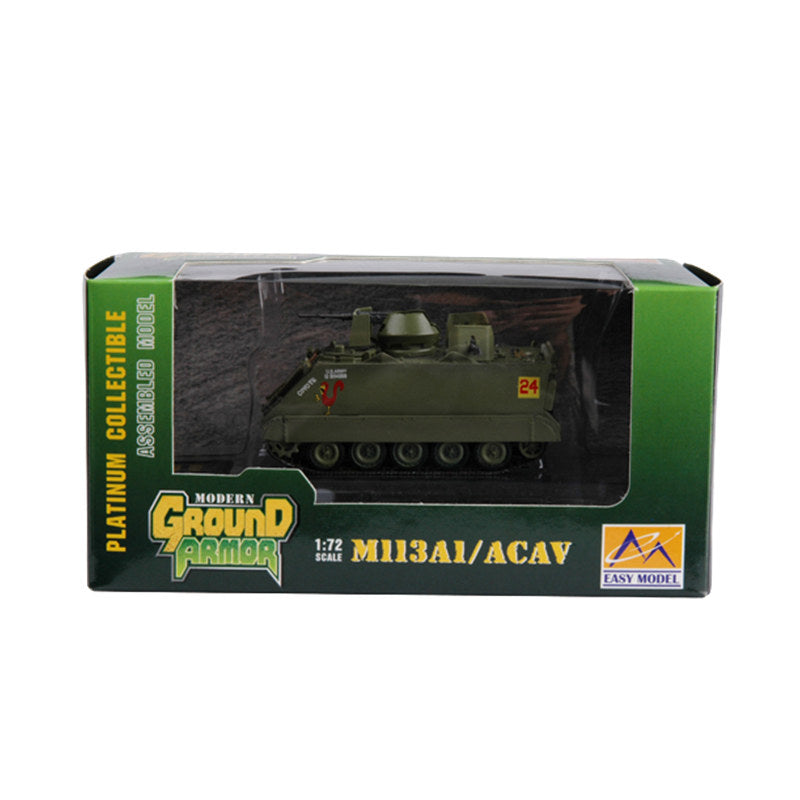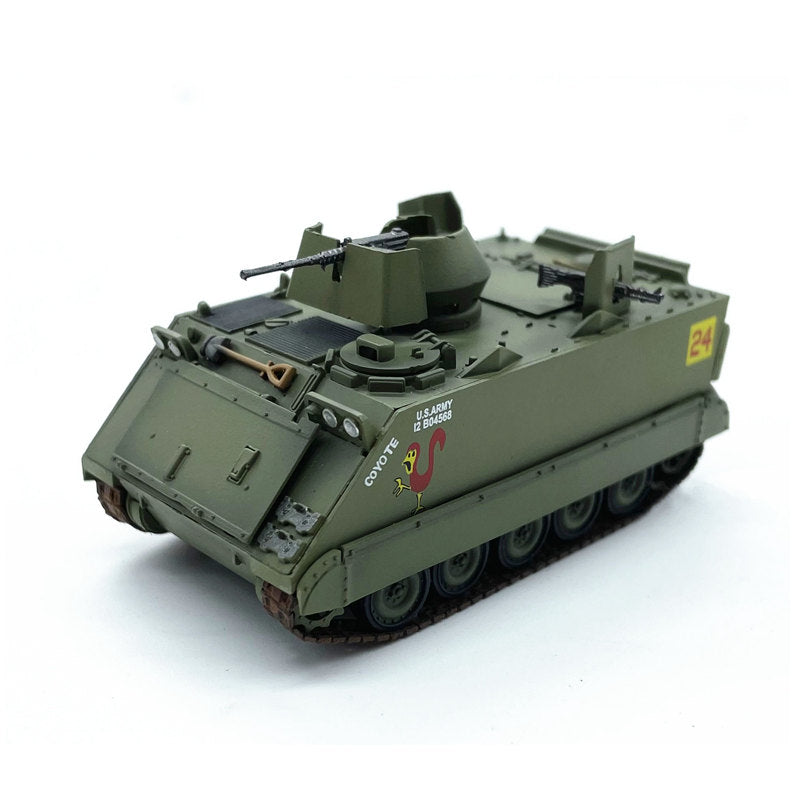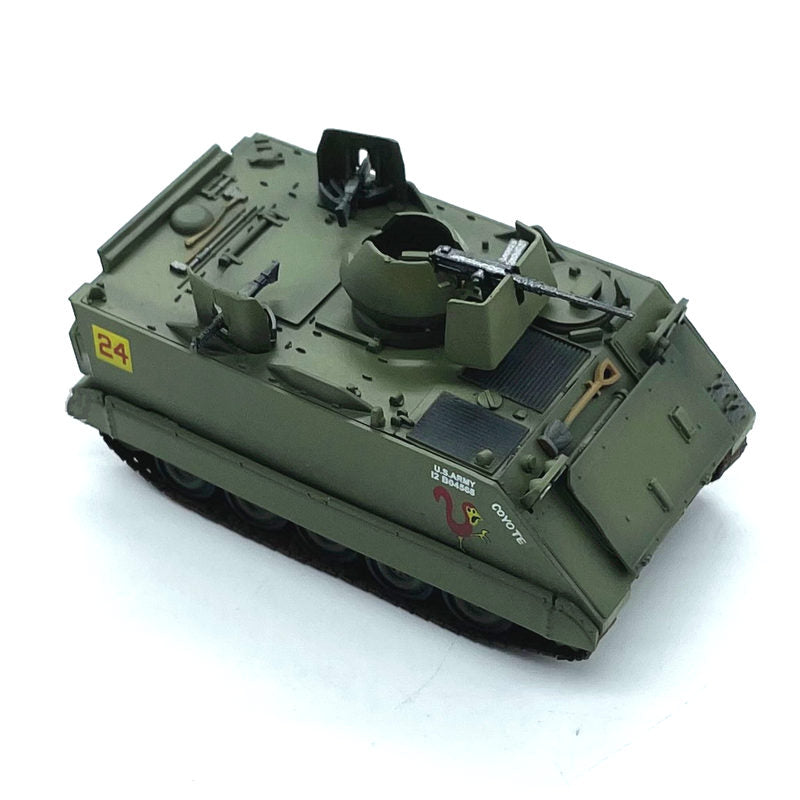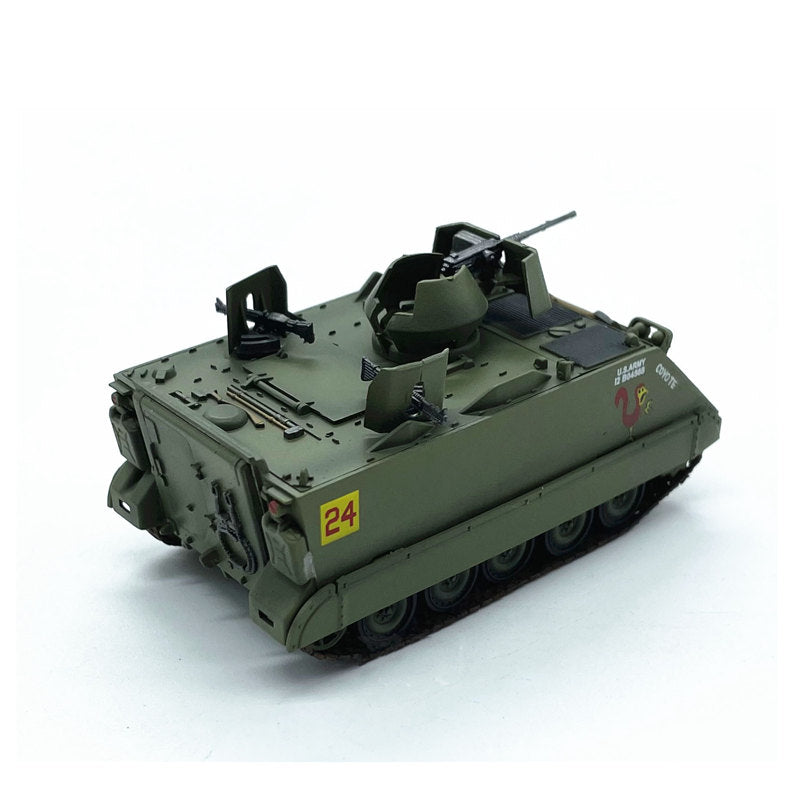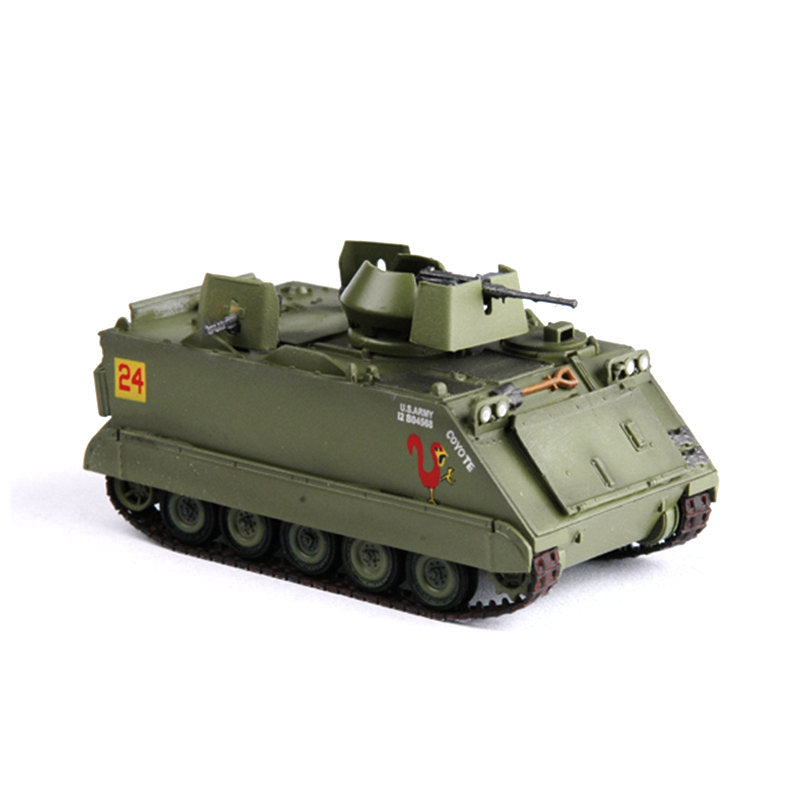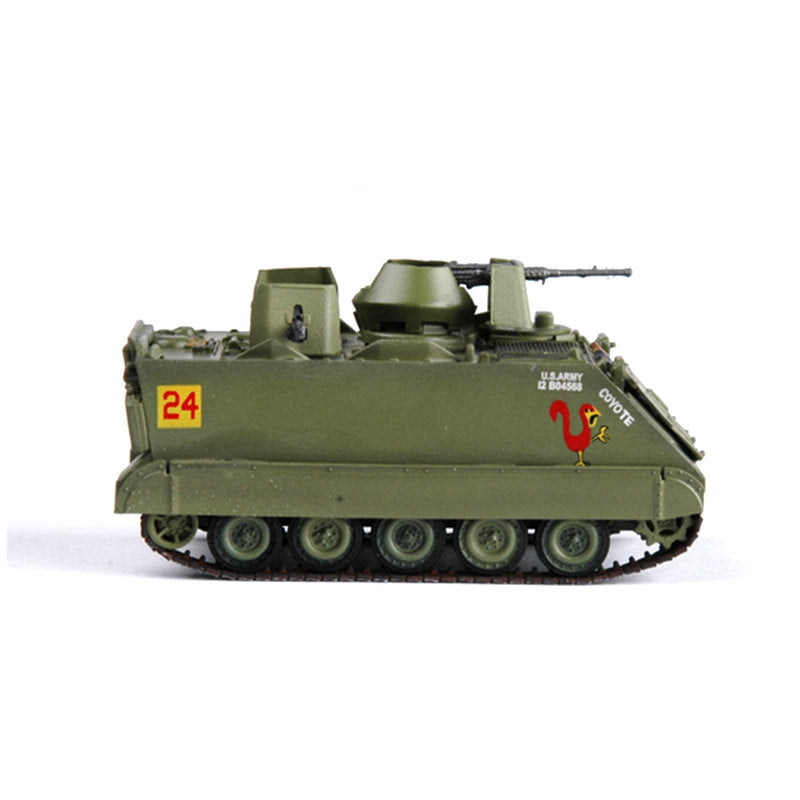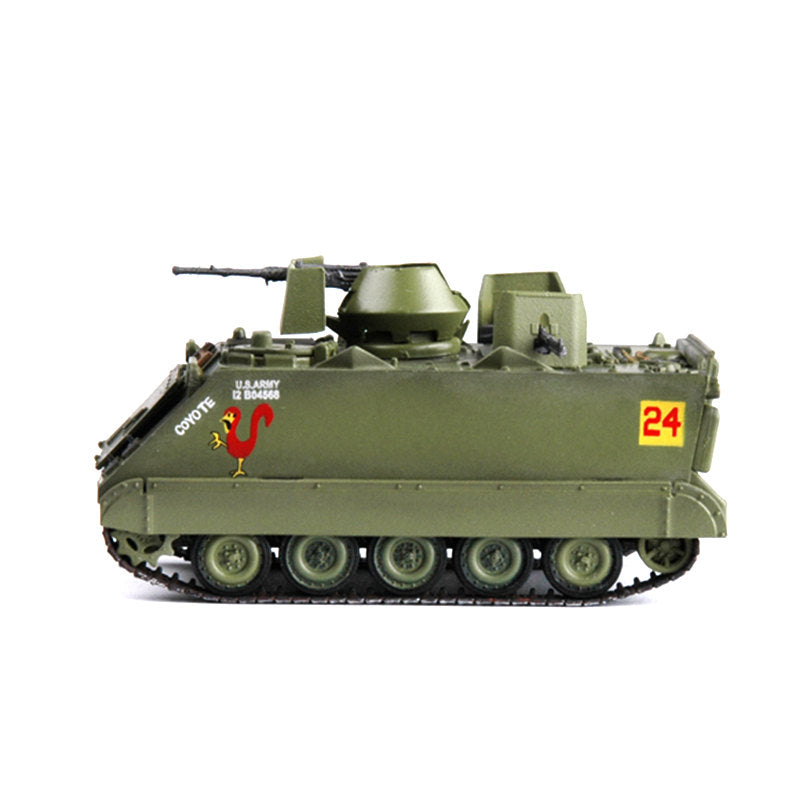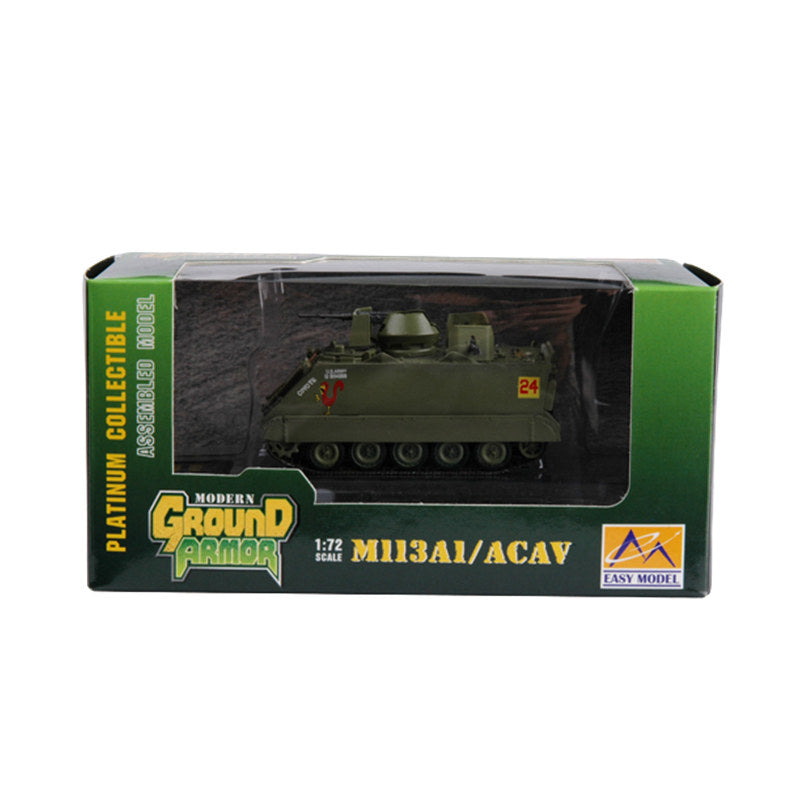old boy hobby
M113 armored cavalry assault vehicle (ACAV) APC pre-built 1/72 scale plastic model
M113 armored cavalry assault vehicle (ACAV) APC pre-built 1/72 scale plastic model
Couldn't load pickup availability
- pre-built and pre-painted, ready to display
- material: plastic
- scale: 1/72
- manufacturer sku: 35002
The M113 is a fully tracked armored personnel carrier (APC) that was developed and produced by the Food Machinery and Chemical Corporation (FMC). The M113 was sent to United States Army Europe to replace the mechanized infantry's M59 APCs from 1961. The M113 was first used in combat in April 1962 after the United States provided the South Vietnamese Army (ARVN) with heavy weaponry such as the M113, under the Military Assistance Command, Vietnam (MACV) program. Eventually, the M113 was the most widely used armored vehicle of the U.S. Army in the Vietnam War and was used to break through heavy thickets in the midst of the jungle to attack and overrun enemy positions. It was largely known as an "APC" or an "ACAV" (armored cavalry assault vehicle) by the allied forces. The M113 was the first aluminum hull combat vehicle to be put into mass production. Much lighter than earlier similar vehicles, its aluminum armor was designed to be thick enough to protect the crew and passengers against small arms fire, but light enough that the vehicle was air transportable and moderately amphibious. In the U.S. Army, the M113 series have long been replaced as front-line combat vehicles by the M2 and M3 Bradleys, but large numbers are still used in support roles such as armored ambulance, mortar carrier, engineer vehicle, and command vehicle. The U.S. Army's heavy brigade combat teams are equipped with approximately 6,000 M113s and 4,000 Bradleys. The M113's versatility spawned a wide variety of adaptations that live on worldwide and in U.S. service. These variants together currently represent about half of U.S. Army armored vehicles. To date, it is estimated that over 80,000 M113s of all types have been produced and used by over 50 countries worldwide, making it one of the most widely used armored fighting vehicles of all time. The Military Channel's Top Ten series named the M113 the most significant infantry vehicle in history. The U.S. Army planned but failed to retire the M113 family of vehicles by 2018, with the GCV Infantry Fighting Vehicle program, now the M113 is planned to be replaced by the Armored Multi-Purpose Vehicle (AMPV) program. Thousands of M113s continue to see combat service in the Israel Defense Forces, although as of 2014 the IDF was seeking to gradually replace many of its 6,000 M113s, with Namer APCs.
M113 armored cavalry assault vehicle (ACAV) variant:
The "armored cavalry assault vehicle" or "ACAV", was a concept and field modification pioneered by the ARVN in 1963 during the Vietnam War. The ARVN troops utilized the M113 armored personnel carrier as an infantry fighting vehicle, and more often than not, as a light tank by fighting mounted rather than as a "battle taxi" as dictated by U.S. Army doctrine.
After it was found that the commander and cargo hatch positions were extremely exposed, and hence the commander and troops were vulnerable to enemy fire, South Vietnamese engineers thought out a simple and cheap remedy to this problem: Initially, field expedient shields and mounts were made from sunken ships, but this was soft metal and could be penetrated by small arms fire. Then armor plate from scrapped armored vehicles was used; this worked well, and by the end of 1964 all ARVN ACAVs were equipped with gun shields. For the U.S. Army, ACAV sets were produced industrially in Okinawa for the 12.7 millimetres (0.50 in) machine gun, and rear aft and starboard M60 machine gun positions. Finally, the ARVN's ACAV modifications were adopted by the U.S. Army in Vietnam, and by 1965 the full ACAV set was mass-produced in the U.S. The kit included shields and circular turret armor for the commander's M2 12.7 mm machine gun, and two additional 7.62 mm M60 machine guns, again with shields, fitted on either side of the top cargo hatch. This kit could be retrofitted to any M113. ACAV sets were sometimes fitted to the M106 mortar carrier, but the different rear hatch found on this vehicle required the left M60 machine gun to be fitted to the extreme rear instead of the side. Many kits were added in the field, but at least in the case of the 11th Armored Cavalry Regiment, the vehicles had their ACAV sets installed in the U.S. prior to their deployment to Vietnam in 1966 from Fort Meade, Maryland. Additional armor in the form of a mine protective kit under the hull was also frequently fitted.
--copied from Wikipedia
Share
